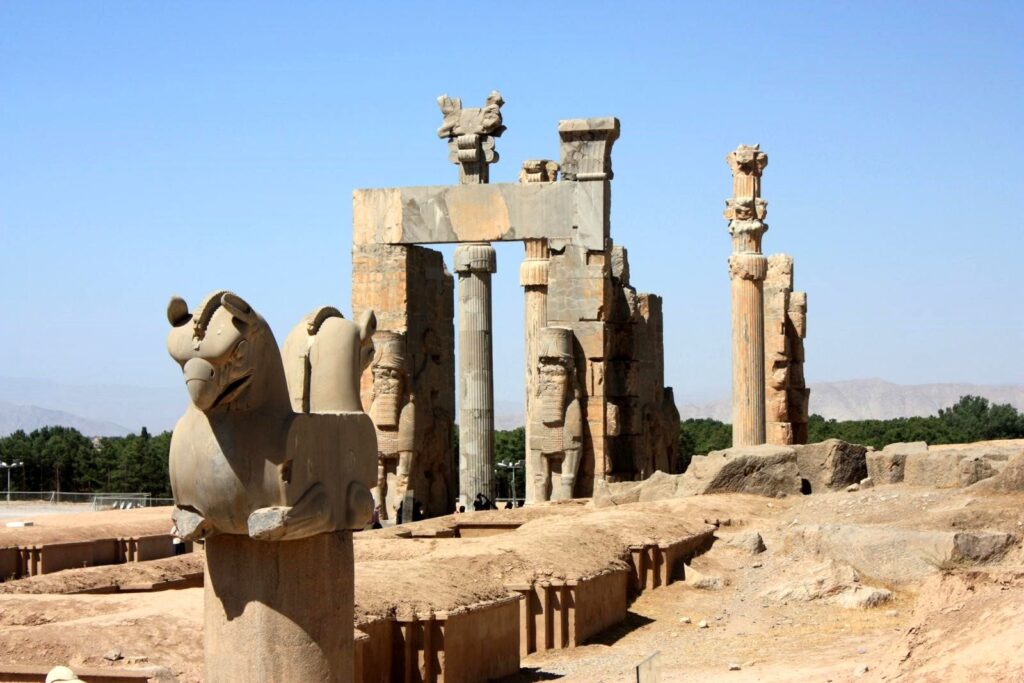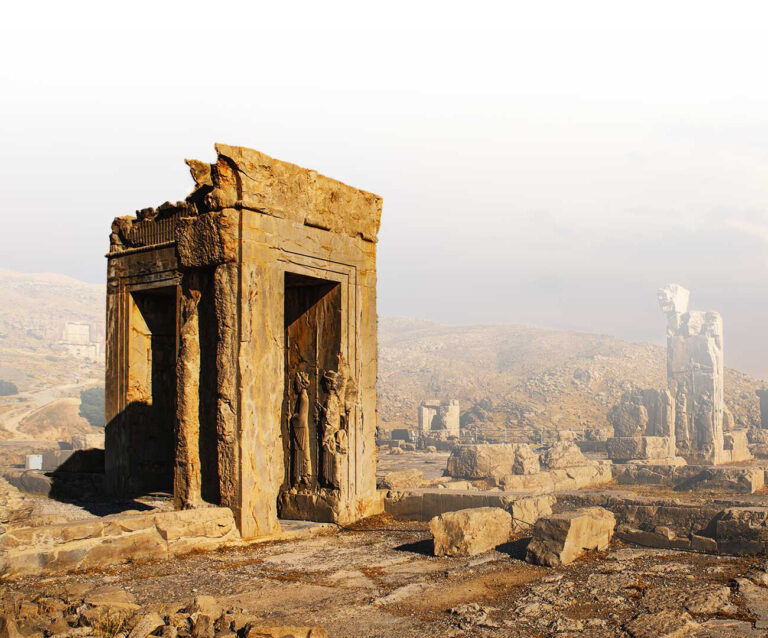
Persepolis, the grand capital of the Achaemenid Empire, is one of the most remarkable historical sites in Iran and the world. This complex, located in Fars Province, near the city of Shiraz, was built during the reign of Darius the Great and his successors. Persepolis represents the pinnacle of art, power, and engineering of ancient Iranians, showcasing the history and culture of Persia through its extraordinary architecture.
History of Persepolis
The construction of Persepolis began around 518 BCE under the order of Darius the Great, and subsequent kings, including Xerxes I and Artaxerxes I, continued expanding and developing it. This grand complex was used for official ceremonies and Nowruz celebrations, symbolizing the greatness of the Achaemenid dynasty.
Unfortunately, Persepolis was set on fire in 330 BCE by Alexander the Great, but its remains still stand as one of Iran’s most significant archaeological treasures.
Architectural Features of Persepolis
Persepolis’ architecture is a unique blend of advanced engineering, artistic precision, and cultural symbolism. Some of its most notable architectural features include:
1. Use of Massive Stone Blocks
One of the marvels of Persepolis’ construction is the use of enormous stone blocks, carefully carved and placed together with remarkable precision.
2. Majestic and Tall Columns
The columns of Persepolis, reaching 20 to 25 meters in height, are among its most striking features. These columns are adorned with bull, lion, and winged-horse capitals, symbolizing strength and power.
3. Grand Stairways and Intricate Reliefs
The entrance stairways of Persepolis feature 121 wide and shallow steps, allowing for a smooth ascent. Alongside these stairways, elaborate reliefs depict representatives of various nations presenting tributes to the Persian king.
4. Magnificent Halls and Palaces
Persepolis consists of numerous palaces, including the Apadana Palace, Tachara Palace, Hundred-Column Hall, and Hadish Palace, each serving a unique function in the complex.
Key Structures of Persepolis
1. Apadana Palace
One of the most magnificent palaces of Persepolis, featuring 72 towering columns, used as the main audience hall for receiving envoys from different nations.
2. Tachara Palace (Palace of Darius the Great)
A private residence for Darius the Great, known for its polished stone walls and intricate craftsmanship.
3. Hundred-Column Hall
Built by Xerxes I, this grand hall contained 100 massive columns and was one of the largest ceremonial halls in Persepolis.
4. Hadish Palace
The private residence of Xerxes I, situated at the highest point of Persepolis, believed to be his personal royal retreat.
Conclusion
Persepolis stands as one of the greatest and most valuable architectural wonders of ancient Persia, symbolizing the grandeur, strength, and culture of the Achaemenid Empire. With its meticulous engineering, artistic design, and deep cultural significance, it remains one of the most important historical monuments in the world.


No comments yet.